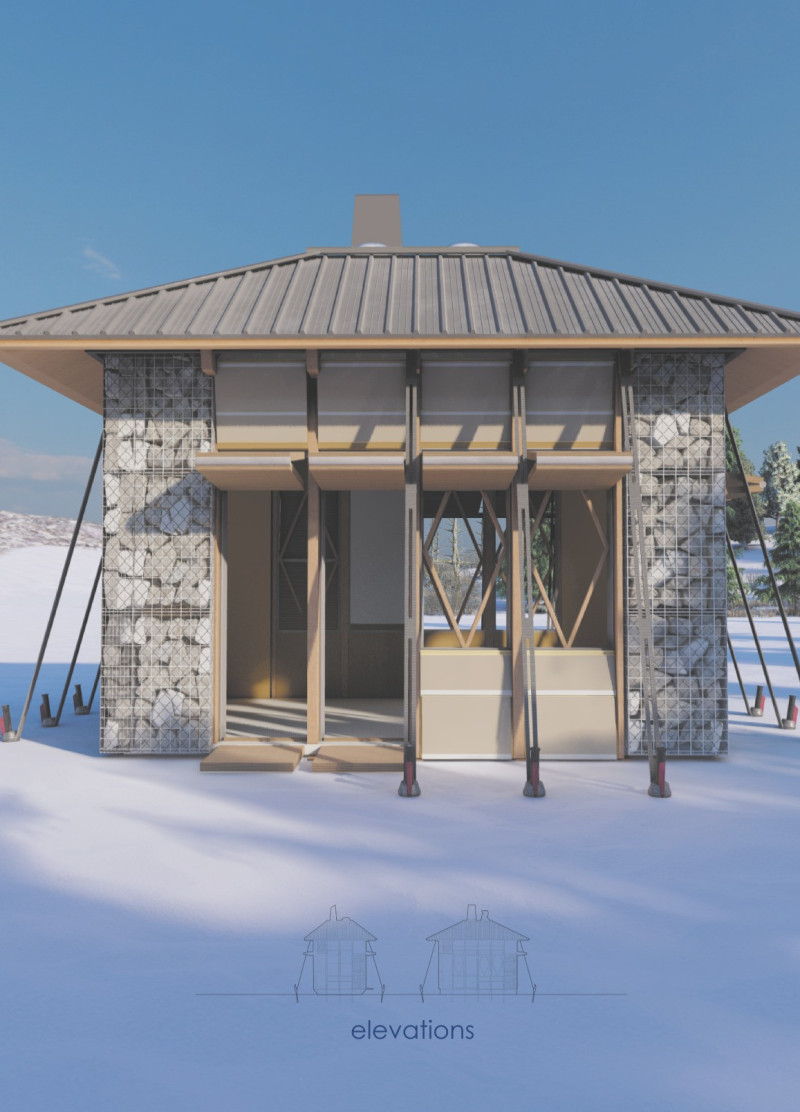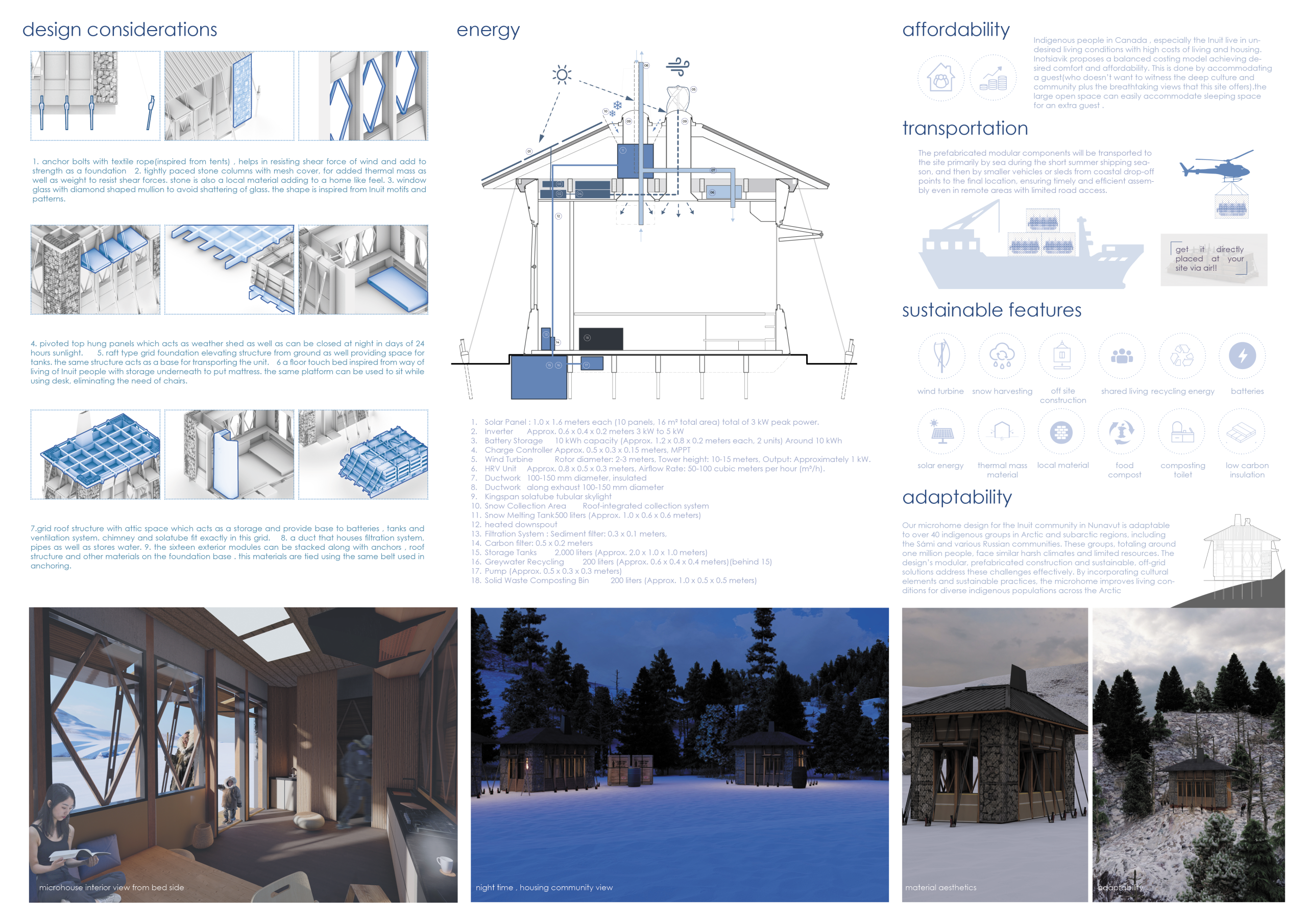5 key facts about this project
### Overview
Inotsiavik is a microhousing initiative situated in Nunavut, Canada, designed specifically for the Inuit community. The project addresses critical housing shortages while reflecting the cultural values and traditions of the Inuit people. By integrating modern living requirements with elements characteristic of traditional Inuit architecture, the initiative aims to create a supportive and sustainable living environment in an area known for its extreme climate challenges.
### Design Strategy and Materiality
The structural design employs modular components, allowing for efficient transportation and assembly in remote locations. Each housing unit is strategically created to promote community interaction, with spaces dedicated to communal gatherings and activities that honor the Inuit way of life. Material selection emphasizes sustainability and resilience, featuring QuadCore® K1000RV LEC roof panels for thermal efficiency, composite wall panels for insulation, and gabion walls made from locally sourced stones for durability and aesthetic coherence with the natural surroundings.
The project also integrates sustainable energy solutions, including solar panels and wind turbines, to ensure self-sufficiency. Water collection systems designed to capture snowmelt further enhance sustainability, addressing essential resource needs in the region's harsh environment. This approach not only respects the ecological constraints but also fosters resilience against the severe weather conditions typical of the Arctic.
### Community Engagement and Cultural Integration
Inotsiavik prioritizes cultural resonance by incorporating elements that reflect Inuit heritage and community values. The adaptable design allows for flexibility in unit size and configuration, meeting the evolving needs of residents. This emphasis on community-focused living enhances emotional connections to the environment, aiming to bridge the gap created by previous housing solutions that did not sufficiently mirror traditional lifestyles. By addressing both practical and cultural aspects, the project provides a framework for revitalizing Inuit identity while ensuring functional living spaces in an extreme climate.






















































